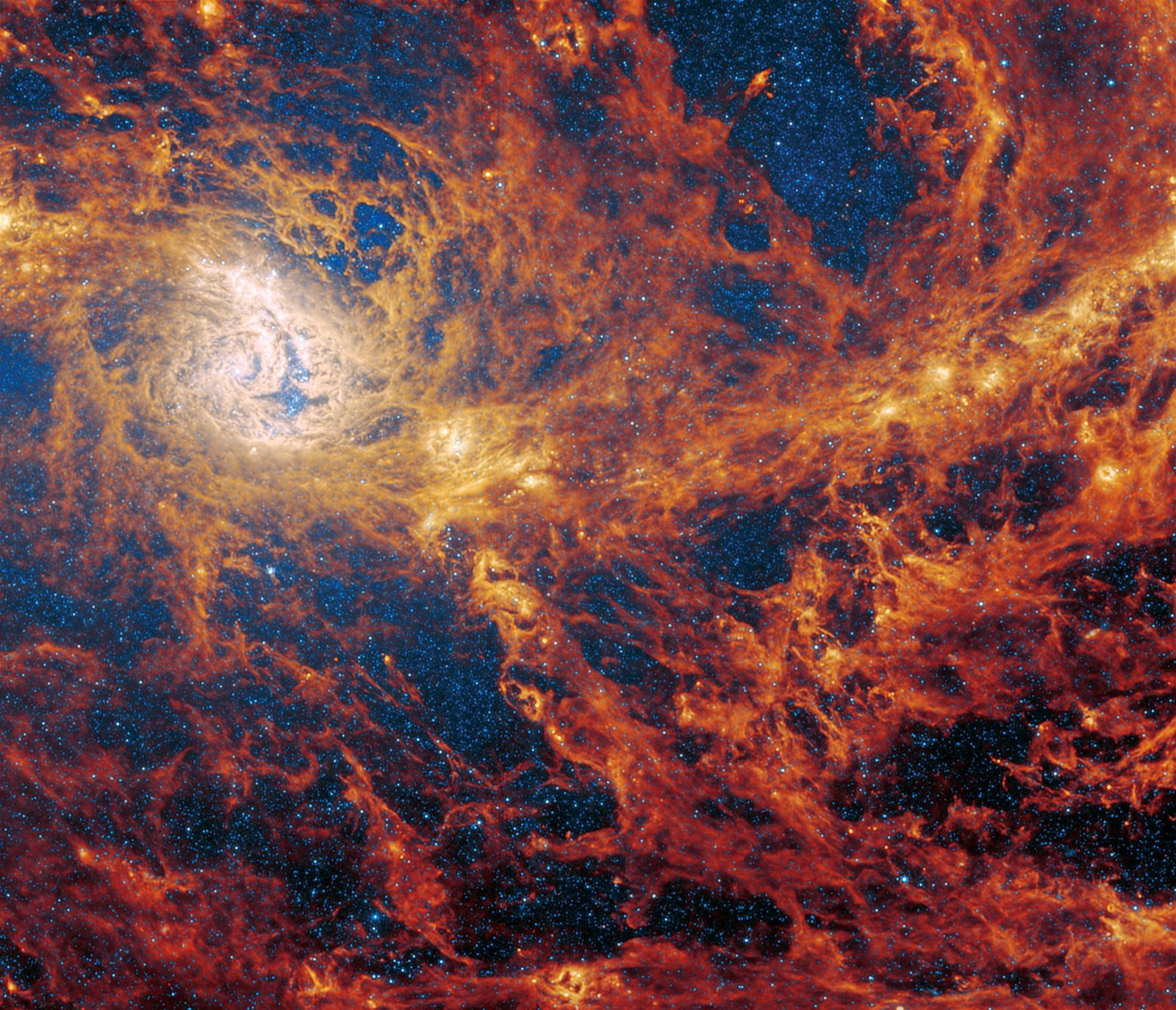
© Webb Telescope
This stunning spiral isn’t a gateway to the abyss. It’s the galaxy Messier 83 as seen through the eyes of the James Webb Space Telescope. More specifically, the observatory captured this image by tapping into one of its powerful infrared devices, the Mid-Infrared Instrument (MIRI). Also known as NGC 5236, Messier 83 is a barredspiral galaxy located about 15 million light years from us. It’s of particular interest to astronomers trying to learn more about star formation. The James Webb Space Telescope’s MIRI is astronomers’ current tool of choice in that quest because, as its name suggests, it observes the universe through infrared wavelengths between 5,000 and 28,000 nanometers. By comparison, visible light, or the light human eyes are built to see, has wavelengths between 380 and 750 nanometers.
In the image, bright-blue regions in the middle indicate areas of dense stars in Messier 83’s galactic centre. The brightyellow tendrils spindling out indicate stellar nurseries, or regions where large batches of new stars are actively forming. And the orange-red splashes mark regions rich in polycyclic aromatic hydrocarbons, which are carbon-based compounds that MIRI’s wavelengths are ideal for detecting.